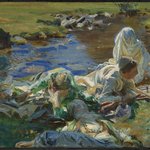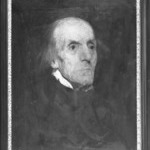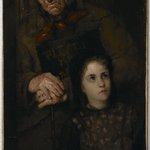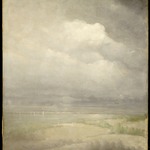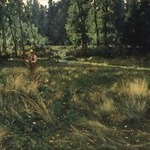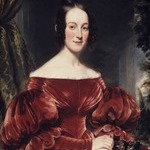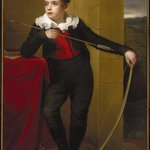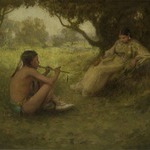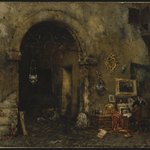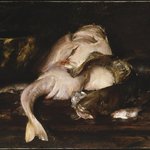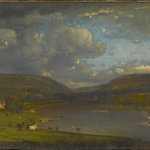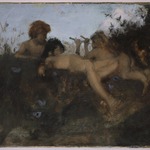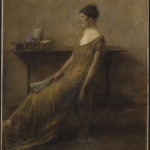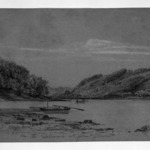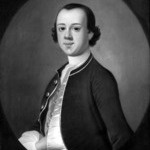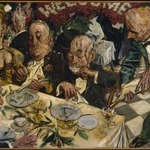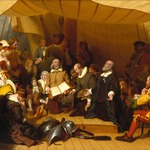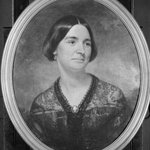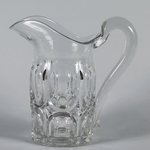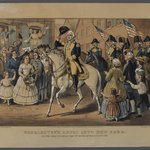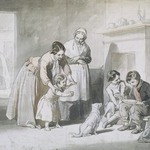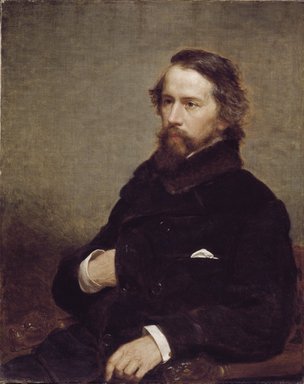
General John Charles Frémont
Charles Loring Elliott
American Art
A western explorer, maverick soldier, and failed politician, John Frémont championed the antislavery cause as the first presidential candidate of the new Republican party in 1856, only to lose to James Buchanan. Appointed by Abraham Lincoln to head the Union army's Department of the West in 1861, Frémont provoked the president's ire when he single-handedly confiscated the property and emancipated the slaves of pro-South Missourians. He considered a second run fro president in 1864—representing Lincoln's Radical Republican opponents within the party.
MEDIUM
Oil on canvas
DATES
1857
DIMENSIONS
36 x 29 1/8 in. (91.4 x 74 cm)
frame: 50 1/2 x 43 5/8 x 5 in. (128.3 x 110.8 x 12.7 cm) (show scale)



COLLECTIONS
American Art
ACCESSION NUMBER
20.666
CREDIT LINE
Carll H. de Silver Fund
PROVENANCE
Prior to 1897, provenance not yet documented; by June 1, 1897, acquired by Charles C. Markham of Brooklyn, NY; between June 21, 1906 and April 3, 1908, provenance not yet documented; by April 3, 1908, acquired by William S. Hughes of Brooklyn; between November 7, 1919 and April 1920, provenance not yet documented; by April 1920, acquired by Frank M. Widner, Jr. of New York, NY; by July 15, 1920, purchased from Frank M. Widner, Jr. by the Brooklyn Museum.
Provenance FAQ
EXHIBITIONS
MUSEUM LOCATION
This item is not on view
CAPTION
Charles Loring Elliott (American, 1812-1868). General John Charles Frémont, 1857. Oil on canvas, 36 x 29 1/8 in. (91.4 x 74 cm). Brooklyn Museum, Carll H. de Silver Fund, 20.666 (Photo: Brooklyn Museum, 20.666_SL3.jpg)
IMAGE
overall, 20.666_SL3.jpg. Brooklyn Museum photograph
"CUR" at the beginning of an image file name means that the image was created by a curatorial staff member. These study images may be digital point-and-shoot photographs, when we don\'t yet have high-quality studio photography, or they may be scans of older negatives, slides, or photographic prints, providing historical documentation of the object.
RIGHTS STATEMENT
No known copyright restrictions
This work may be in the public domain in the United States. Works created by United States and non-United States nationals published prior to 1923 are in the public domain, subject to the terms of any applicable treaty or agreement.
You may download and use Brooklyn Museum images of this work. Please include caption information from this page and credit the Brooklyn Museum. If you need a high resolution file, please fill out our online application form (charges apply).
The Museum does not warrant that the use of this work will not infringe on the rights of third parties, such as artists or artists' heirs holding the rights to the work. It is your responsibility to determine and satisfy copyright or other use restrictions before copying, transmitting, or making other use of protected items beyond that allowed by "fair use," as such term is understood under the United States Copyright Act.
The Brooklyn Museum makes no representations or warranties with respect to the application or terms of any international agreement governing copyright protection in the United States for works created by foreign nationals.
For further information about copyright, we recommend resources at the United States Library of Congress, Cornell University, Copyright and Cultural Institutions: Guidelines for U.S. Libraries, Archives, and Museums, and Copyright Watch.
For more information about the Museum's rights project, including how rights types are assigned, please see our blog posts on copyright.
If you have any information regarding this work and rights to it, please contact copyright@brooklynmuseum.org.
RECORD COMPLETENESS
Not every record you will find here is complete. More information is available for some works than for others, and some entries have been updated more recently. Records are frequently reviewed and revised, and we welcome any additional information you might have.

